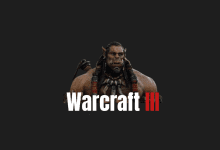
While the traditional gaming industry has continuously evolved over the years, the rise of Web3 technology has ushered in an entirely new era of gaming. Web3, a collection of decentralized, blockchain-based technologies, is leading to revolutionary changes in the gaming industry. In this article, we will explore how Web3 is transforming the gaming world and its potential for the future.
Why is Web3 important for the gaming industry?

Web3 is crucial for the gaming industry because it enables true ownership and trading of in-game assets through decentralized, blockchain-based technologies. This allows players to convert in-game assets into real money and trade them on decentralized markets, making in-game economies more dynamic and vibrant. Additionally, Web3’s integration of NFTs (Non-Fungible Tokens) facilitates the creation of tokens that represent unique digital ownership of in-game assets. This enables players to collect and trade rare or unique items, adding more value and appeal to the gaming experience.
What innovations does Web3 bring to the gaming industry?

Web3 is fundamentally transforming the gaming industry with innovations such as decentralized economies, the integration of NFTs, and increased player participation in game development.
- Decentralized Game Economies: Web3 allows players to own and trade in-game assets in a decentralized way, providing true ownership and value. Players can convert their in-game assets into real-world money and trade them outside the game environment.
- Integration of NFTs (Non-Fungible Tokens): NFTs represent unique digital ownership of in-game assets. Web3 enables the tokenization of these assets as NFTs, allowing players to buy, sell, and trade rare or unique items.
- Fungible Game Items: Web3 allows for in-game assets to be freely traded on decentralized marketplaces. Players can trade assets between different games and use the items they’ve earned across multiple gaming platforms.
- Increased Player Engagement and Influence: Web3 fosters greater player involvement in the game development process, giving players more influence over the future of games. Decentralized gaming communities and governance models empower players to contribute directly to the development of gaming ecosystems.
What is Web3’s potential for the future?

- Real-Time Economies and Gameplay: Web3 enables players to buy and sell their in-game assets in real-time, making gaming economies more dynamic and engaging.
- Increased Freedom and Flexibility in Games: Web3 offers both developers and players greater flexibility, allowing for the creation of new game development models and innovative gaming experiences.
- Integration of Real and Virtual Worlds: Web3 blurs the boundaries between the real world and virtual worlds, enriching the gaming experience. For instance, real-world events can be integrated into games, or in-game assets could be linked to real-world counterparts.
Web3 is emerging as a powerful technology with the potential to transform the gaming industry. Innovations such as decentralized economies, the integration of NFTs, fungible game items, and increased player participation are driving significant changes in how games are developed and played. The full potential of Web3 in the gaming world remains to be seen, but it is expected to grow and evolve further in the coming years.
You may also like this content
- Web3 Accelerated in October: Gaming, DeFi, and NFT Transaction Volume Surged
- YouTube’s ‘Gambling’ Update Triggers Crypto Concerns: What is Actually Changing?
- $10 Million Reward for White-Hat Web3 Hackers
Follow us on TWITTER (X) and be instantly informed about the latest developments…











